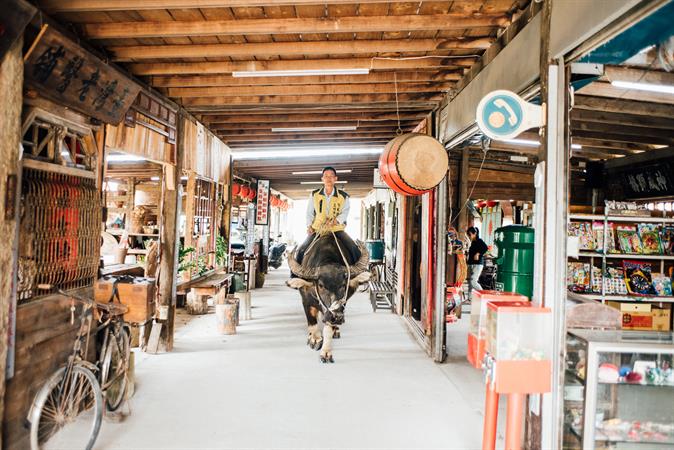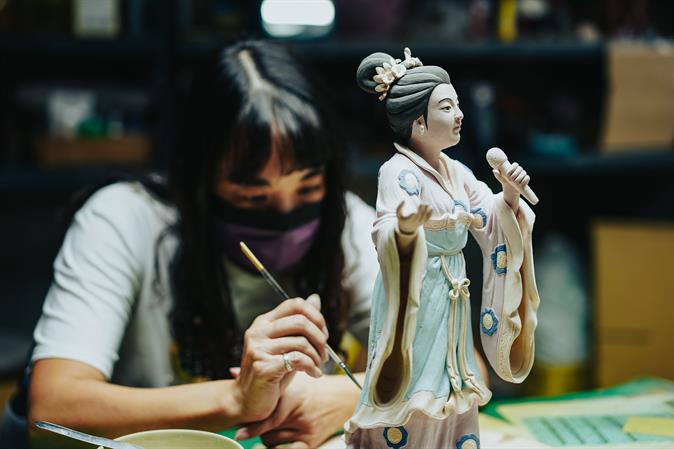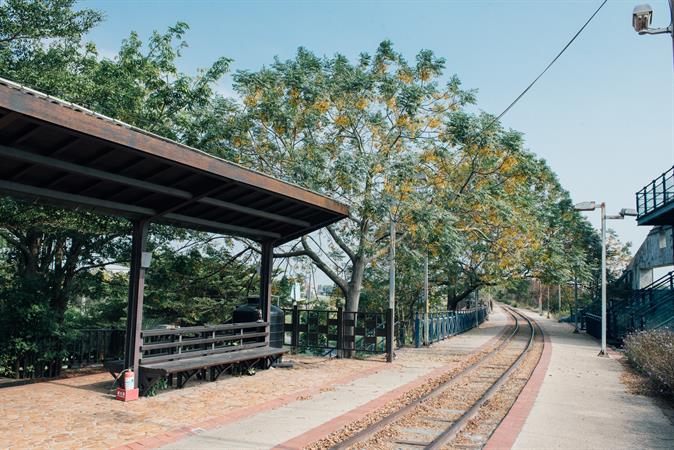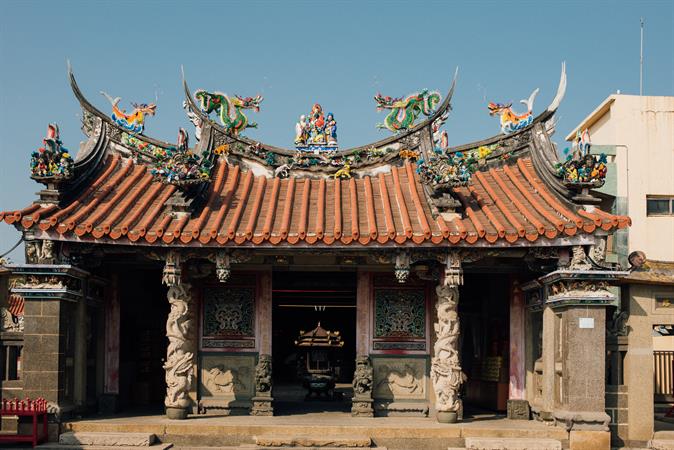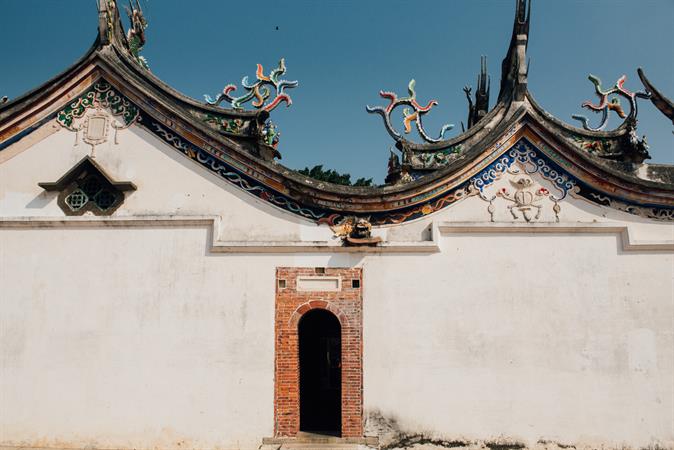Local Features
Da-Ching Incense Making Factory
Da-Ching Incense Making Factory has a history of one hundred years, and its story starts from 150 years ago and the family runs the business generation after generation. The full process of incense making starts from swiftly dipping the bamboo cores into the water, and the first layer of clay as the foundation is complete before the fragrant powder is coated. And then dry them on the shelves in the shadow before expose them to the sunshine.
Water agarwood, dark agarwood, sandalwood and top incense are different products from the exclusive formula that Da-Ching Incense Making Factory studied various spices to concoct the natural fragrant powder and medicinal materials.
Visitors can try to make incenses here and listen to the introduction given by the incense maker, “in the old times, people used the incense to count the time or heal the illness”. The incense is lit up and the visitors will bring the smell of fragrance with themselves home.
Ting-Tshai-Hng Native Museum
It’s like taking the time machine to the old times at Ting-Tshai-Hng. In the guided tour, visitors learn the practices and slangs in the farming village and also harvest the crops. Sitting on the bench or stool, visitors will have the most tasty harvest lunch after the hard work.
The owner of Ting-Tshai-Hng collected each and every article piece by piece here and built such a small scaled village on his own. “Articles in the garden are all in use; they are not vulnerable or untouchable antiques. The more they are used, the more affection is accumulated for them.” He values the farming memories in the villages and tries to bring the hospitality and friendliness back to the daily interpersonal interaction.
Bantaoyao Crafts Studio of Jiao-Zhi Pottery & Chien-Nien (meaning Cut and Paste)
This is the first art and cultural studio integrating exhibition, education, experiences and crafts in Taiwan. It is a key base for crafts and arts and brings more exquisite traditional arts to more people through exhibitions and experiential activities.
Against the glass window, visitors will see the artisans are focused to shape the Cochin ware (Jiao-Zhi Pottery) with 6 major skills “pinch, pile, sculpt, paste, carve, and scratch” before glazing and firing. These beautiful art works are the colorful decoration in the temples. Outside of the glass windows, visitors can use different mosaic tiles to design their own piece of work through cutting, pasting and setting.
Mural 《The Four Seasons in Our Hometown》
The community utilizes Cochin ware and cut-and-paste art work, and then turns the dike into the canvas to present the four seasons and the bead tree with hundreds of wine pots and more than 20,000 bowls. This piece of art work is “The Four Seasons in Our Hometown”.
Biking in the community and visitors will encounter this magnificent wall full of Cochin- ware flowers at the bend- bright white flowers in spring, lush green plants in summer, fruits born in autumn, and the tree branches in bleak winter, which seem like the colorful four seasons of our life. Visitors may stop and feel the artisans’ ingenuity through the stacks, layers after layers.
Fuxing Iron Bridge
The wooden “Beigangxi Bridge” built during Japanese Occupation Period connects Beigang in Yunlin and Xingang in Chiayi, and more than just for the railroad that transport sugarcanes, it is also a bridge connecing two generations’ emotions.
Its name, “Fuxing Iron Bridge” was given after the renovation in 1951 and it bridges both sides and connects the residents’ cultures, believes, and lives tightly.
Bengang Shuixian (Narcissus) Temple
Walking into the temple, visitors won’t feel the heavy history but the simpleness and hospitality. Everything including time seems to slow down and it is filled with quietness and what is seen is the worn red brick flooring titles, the exquisitely carved wooden structure, the faded white embossment on the wall, as well as the deities, “Ancient Experts of Hydraulic engineering”, in the temple such as Dayu, Wuzixi and Quyuan, just to name a few, and they would bless the coastal residents’ daily water transport.
Looking up and paying attention, you will see the delicate cut-paste Cochin wares which seem to blend the art and ancient temple together and keep people stop and linger. The time quietly passes by in the light of the dusk.
.jpg)
